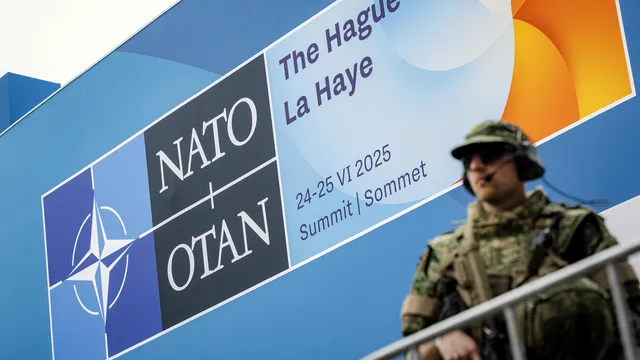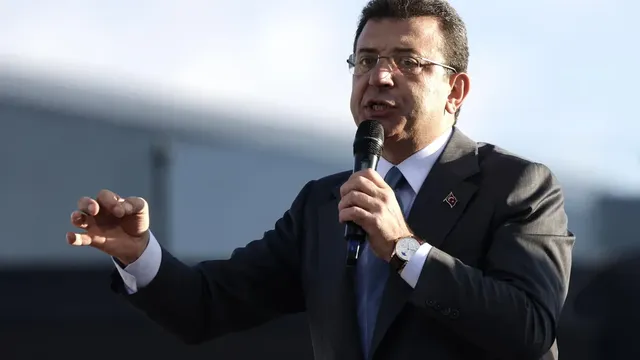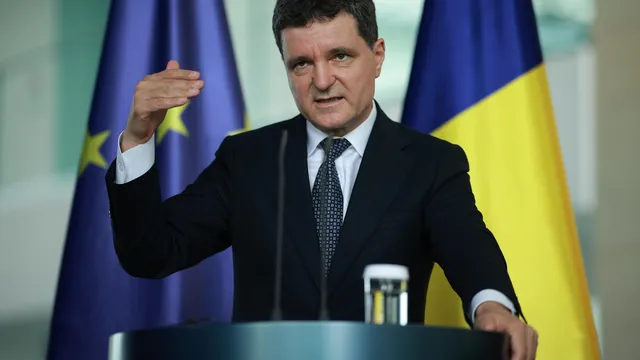Ukraine's drone strike on Russian bombers and Israel's destruction of Iranian air defenses are a warning to NATO countries: experienced adversaries can eliminate vital battlefield assets anywhere before they enter the fray.
This makes the job of preparing for battle more important than ever. Solving the challenge of force protection and mobilization tops NATO's must-do list.
"If World War III breaks out on the European continent, who will fire the first shot?" said U.S. Ambassador to NATO Matthew Whitaker recently. "Will it be Russian tanks invading Poland, or will it be a cyber attack on one of our allies or a challenge to some infrastructure?"
The question hangs over preparations for NATO's annual summit in The Hague, which begins June 24. Funding for readiness and resilience will be high on leaders' agendas and a key element of meeting the spending target set by US President Donald Trump.
At the beginning of the year, Trump said NATO allies should spend 5% of gross domestic product on defence, an increase of 2%. Alliance Secretary General Mark Rutte, who was already pushing for an increase to 3.5%, seized the moment to push for spending in long-neglected sectors such as mobility and sustainability.
In March, Rutte proposed supplementing NATO's traditional defence spending, such as weapons and salaries, with another 1.5% of GDP for military-related spending. Leaders hope the proposal will be approved at the summit.
Most Europeans approve of Trump's goal because they want to avoid giving him a reason to break away from NATO. And they have realised that preparing military forces is never easy, even in peacetime. Troops that mobilize for battle are prime targets for attack. So is infrastructure, from roads and ports to telephone lines and power plants.
The military adage goes that one of the things no commander wants to run out of is options - and adversaries have more ways than ever to limit options. Planners should consider all possible scenarios, from old-style sabotage to innovations including cyberattacks and drone strikes.
"If China can power down our data centers, then maybe it won't need to sink our aircraft carriers," says retired Army Lt. Gen. Douglas Lute, a former U.S. ambassador to NATO.
Western military strategists haven't faced serious logistical threats since World War II. Russia's invasion of Ukraine and the risk of further conflict change that. Logisticians who focus on mobilizing troops and conducting the fighting must now refine their plans in light of national security and the risk that adversaries will do everything possible to stop defense forces from leaving bases and engaging in combat. Israeli special forces operating inside Iran targeted its mobile air defense assets and other equipment in the wake of the Israeli attack on June 13.
"It's going to come to a fight," retired U.S. Air Force Gen. Jacqueline Van Ovost, former head of U.S. Transportation Command, said last year of a potential future conflict. "The homeland is no longer a safe haven."
Van Ovost warned of GPS interference to impede navigation, such as cyberattacks, being among her biggest fears.
Until recently, NATO's 32 members focused on boosting military spending to meet the needs of new battle plans that commanders drew up after Russia's massive invasion of Ukraine in 2022. Those plans, put together by U.S. Army Gen. Christopher Cavolley, NATO's supreme allied commander in Europe, will require members to spend about 3.5 percent of their national economic output on arms and defense, up from the 2 percent target set in 2014.
Fighters and their weapons need a lot of support mechanics, medics, equipment and other spares to keep them running. Military equipment is heavy and cumbersome, requiring fortified bridges and high trestles to move it along civilian transportation arteries.
When in 2015. more than 2,100 NATO troops deployed to Poland and the Baltic states after Russia seized the Crimean peninsula from Ukraine, equipment loaded onto road and rail convoys lost antennas and had other minor breakdowns because the former Warsaw Pact's infrastructure was built to different standards than NATO's, said retired Army Major General Gordon Davis, who was a senior alliance official involved in defense investment.
Allocating funds to non-lethal areas, including infrastructure and resilience, "will help drive targeted investment in things that matter to European defense," Davis said.
When the Netherlands began increasing its defence investment in recent years, its priority was logistics and medical facilities - areas hit hard by years of cuts, said Dutch defence chief General Ono Eichelsheim.
"You need to build resilience on your roads, railways and waterways" by increasing transportation options, Eichelsheim said. "This is expensive and requires a lot of work."
A further complication: in peacetime, national security is not in the hands of the military, and law enforcement rarely coordinates with the armed forces. Sabotage and cyberattacks against private sector assets have only recently begun to be seen as threats to national security.
U.S. authorities have accused China of introducing malware into systems controlling port cranes that would be vital in a military mobilization. The Pentagon has banned foreign ports that use China's Logink cargo data network, which it fears could be used for espionage or to disrupt military logistics.
In Europe, authorities are confronting what they suspect are Russian efforts to probe and attack current military support for Ukraine and future NATO mobilization networks.
According to Norma Cyber, a non-profit organization formed by Norwegian forwarders to support cyber resilience for members, a Russian "threat actor" known as Fancy Bear is targeting the transportation sector in Europe, including air traffic control systems and maritime organizations largely associated with support for Ukraine. | BGNES
---------
Daniel Michaels, Wall Street Journal

 Breaking news
Breaking news
 Europe
Europe
 Bulgaria
Bulgaria







